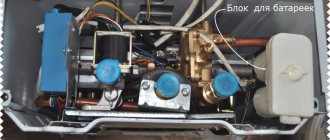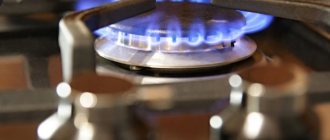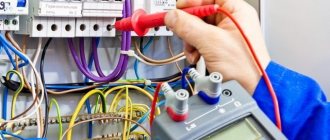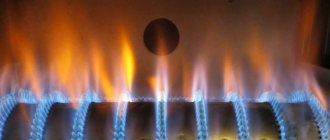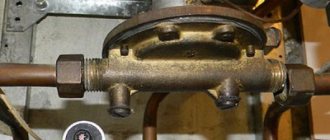The NEVA 3208 geyser is a popular unit in the post-Soviet space, which can often be found in residential buildings without a centralized hot water supply. It is distinguished by its primitive design with excellent reliability of the main components. It was the simplicity of the NEVA 3208 geyser that became the key factor in its durability and endurance. It is not for nothing that units produced decades ago still function today.
But nothing lasts forever, especially Soviet water heating machines. The NEVA 3208 column is an in-line gas heater, which, due to significant moral and physical obsolescence, breaks down from time to time. And, despite its ease of maintenance, you, as a potential owner of the NEVA 3208 model, should be prepared for a number of common malfunctions. To do this, we will try to describe in detail the most common of them, and also share methods for eliminating them on our own.
Column Neva 3208 how to turn on?
To turn on the column, you must first switch it to standby (ignition) mode using the mechanical control knob. In this position, the gas flows to the pilot burner through the tube. Then the solenoid valve button is pressed.
After this, the gas flows through a copper tube through an electromagnetic valve into the gas unit, and then moves to the ignition burner, where a gas-air mixture is directly formed, which is ignited using piezo ignition. As soon as the flame ignites, it begins to heat the thermocouple, which, when heated, produces a CDS, with the help of which the solenoid valve is held.
Its heating time is about 10 seconds, which is exactly how long you need to hold the button. The flame turns on, then you need to open the water valve. Water flows through a copper tube into the water unit. There, tension is created in the membrane cavity, and pressure is exerted on the burner with the rod.
The rod acts directly on the gas valve, overcoming the forces of the return spring, and the gas valve opens. The gas enters the manifold, is then evenly distributed and enters the nozzle, burner sections and is ignited using a pilot flame. It heats the copper heat exchanger, which in turn heats the water passing through it, as a result of which we get heated water. Exhaust gases exit into the chimney through a gas exhaust device.
Parameters that are monitored by geyser sensors:
- Presence of pilot flame. If for some reason it goes out, the gas supply stops.
- The presence of water flow through the water unit. The valve closes and the fuel supply to the main burner stops, leaving only the pilot flame to burn.
- Traction. If the chimney is clogged, the exhaust gases begin to escape not through the exhaust device upward, but back into the ignition group and, as a result, the burner goes out.
In order to regulate the temperature of the passing water, it is necessary to turn the knob, through which the pressure of the supplied gas to the main burner changes. The lower the gas pressure, the lower the flame, the slower the heat exchanger heats up, and the lower the outlet temperature.
To turn off the device you must:
- Turn off the water tap.
- Set the relay to the off position.
- Turn off the gas pipeline tap.
- Close the cold water shut-off valve.
The column is reliable in use, will serve you for many years, is low cost, but has low productivity, insufficient for two distribution points. When a device breaks down, it is quite difficult to find suitable spare parts, and breakdowns occur quite often.
Features of domestic geysers
Geysers of the domestic Neva brand are adapted for Russian water supply systems. As stated, the water heater continues to operate even if the pressure is less than 13 mBar. Following the data in the operating instructions, the Neva gas water heater will begin operating at a pressure of 0.2 atmospheres. However, continuous operation of the equipment under such conditions should be avoided.
In the Neva 4511 model, the instructions provide for normal operation of the device at a pressure of 0.10 bar.
Separately, it is worth mentioning about technical maintenance. In most cases, the service of imported geysers does not satisfy consumers. Even if the part needed for replacement is selected, its delivery may take a long time. And not many service centers undertake the repair of foreign speakers. The state of affairs is completely different for domestic gas instantaneous water heaters. For example, the Neva Transit gas water heater has a removable heat exchanger. The price of the component part is about 4000 rubles. It is this part in such devices that is most vulnerable.
Another advantageous feature of Russian systems is the price segment. The cost of such devices, unlike imported models, is cheaper. In addition, such systems can operate properly for 7-10 years.
Reviews about technical characteristics
The rated power of the column is 21 kW, it has automatic ignition, and the weight is only 11 kg. According to buyers, flow-through geysers are more popular today than storage water heaters, because if you prefer the former, you won’t worry about running out of hot water suddenly.
Consumers also consider ionization of the inclusion as a plus, as well as fairly low gas consumption. Liquefied water will consume 0.8 m3 per hour, while natural gas will consume 2.2 m3. Some consumers don’t really like that the speaker does not have a remote control, but an electronic ignition is a bonus. For more comfortable operation, the equipment is equipped with a display and heating indication, which can be called significant advantages. The Neva 4511 brand geyser has compact dimensions, which are equal to 565 x 290 x 221 mm, but as for the chimney, its diameter is 125 mm.
Compact and safe
By purchasing a Neva 4511 gas water heater, you can install it on the wall, which is very convenient for small bathrooms, because the equipment in this case will not take up too much space. Buyers also choose this device for the reason that it is equipped with a security system, which is complemented by a flame control sensor.
Preparing to set up a water heater
Although there are instructions for the Bosch, Selena and Neva gas water heaters on how to set them up correctly, not everyone understands how to do this. Having made a mistake at the very beginning, the device begins to work not as it should. You should start by regulating the water supply.
First of all, adjust the water regulation. If you do it at the last moment, then all the settings will be incorrect. The flow must be the smallest . The values can be found in the documentation, they are usually 6, 10 and 12 liters.
The main thing is that there is only one tap for work.
Gas water heater NEVA 4511 - we identify and repair
The NEVA 4511 geyser is a compact water heating unit with a rated power of 21 kW. This indicator is quite enough to provide hot coolant to apartments and country houses of various sizes.
The NEVA 4511 geyser is a budget-friendly and fairly compact appliance that is convenient and easy to use. The burner flame is ignited using batteries. The built-in LCD display informs the user about the key operating parameters of the unit. The design provides for a water cooling system for the combustion chamber. The modest dimensions of the unit make the speaker invisible in any room, which can be considered as an additional plus.
The design of the NEVA 4511 geyser is quite simple, but at the same time it is not alien to modern technical achievements in matters of efficiency and safety. This model is manufactured in accordance with domestic and international requirements for equipment of this kind. This suggests that the manufacturer takes a responsible approach to the design of water heating equipment, taking care of both the consumer and its reputation in the international market.
Speaking about the design of the NEVA 4511 geyser, it should be noted that the device is designed for easy operation. The equipment starts automatically when the hot water tap is opened and goes out when the user turns off the tap. With the inexpensive and reliable speaker NEVA series 4511, you can forget about a burning wick, which can become a serious hazard. The fact that the column is powered by batteries ensures the durability of the main components and extends the life of the unit as a whole.
Design
Structurally, the Neva columns are:
Flow-through. They are compact - small dimensions are achieved due to the absence of a storage tank. Such devices are suitable for small, well-ventilated rooms. The productivity of flow devices is low. If a flow column is purchased to serve several water intake points, you will have to choose a version with high power.
Flow-type devices are often chosen by apartment owners.
Cumulative. They have impressive dimensions. Tank capacity - 50–500 l. It contains a supply of heated water. Effective thermal insulation prevents it from cooling down. To use hot water, you do not need to start the device every time. Storage columns are equipped with efficient heat exchangers.
The disadvantage of such water heaters is their size - due to their large dimensions, they have to be installed in special rooms, in basements or attics. Such devices are usually purchased for private homes. If the consumer chooses the Neva 4511 storage type version, the weight of the water tank should be taken into account - a concrete base will have to be prepared.
What to look for when choosing a battery
The purchase of counterfeit products or products that have been subjected to mechanical damage or increased temperature during storage and transportation can negate all efforts to restore the functionality of gas equipment.
Such a battery can last only a few days and you will need to go to the store again for a new battery.
To minimize the likelihood of purchasing low-quality products, you must:
- Make sure the column supports this voltage.
- The larger the capacity, the longer it will work.
- You should carefully inspect the battery for abrasions, scratches and dents.
- Determine the shelf life of the product, which may be indicated on the product body and packaging.
- Do not purchase products from dubious retail outlets.
At what price can you buy a Neva gas water heater?
The cost of a particular model largely depends on its functionality. Before you buy a Neva gas water heater, you should decide on the required characteristics. Prices for some models are presented in the table below.
| Model | Characteristics | Average price (as of May 2021), rub. |
| Neva VPG-12E | Productivity: 11.5 l/min. Power - 24 kW. Gas control. Auto-ignition. | 8 300 |
| Neva VPG-8 EG-058 waterfall | Productivity: 8 l/min. Gas control. Auto-ignition. | 7 100 |
| Neva 4011 | Productivity - 11 l/min. Open combustion chamber. | 10 600 |
| NEVA 9 | Electronic ignition. Productivity - 9 l/min. Power - 19 kW. | 5 700 |
| Neva Lux 5611 | Productivity - 11 l/min. Power - 21 kW. Weight: 11.5 kg. Minimum pressure: 0.15 bar. | 10 000 |
The combustion chamber
produces water heaters with both types of fireboxes - closed and open. In the first case, forced draft is used, in the second - natural.
A coaxial chimney is connected to models with a closed chamber. Its design allows for the simultaneous removal of gases and the supply of combustion air. Open chambers involve the absorption of air from the room. Such modifications require a traditional chimney.
Versions with open fireboxes are installed in rooms that meet safety requirements:
- area from 8 m²;
- effective ventilation system made of heat-resistant material.
Neva 4511, 4513, lux 5611, how to work with the devices.
Device diagram Neva 4511, 4513
1 – handle for regulating water flow; 2 – handle for regulating gas flow; 3 – display showing water temperature; 4 – facing; 5 – inspection hole; 6 – cold water supply fitting, G ½ thread; 7 – gas supply fitting, G ½ thread; 8 – hot water outlet fitting, G ½ thread; 9 – pipe of the gas exhaust device; 10 – mounting holes.
Turning on the devices:
- First you need to insert the batteries.
- Open the gas valve.
- Open the cold water tap.
- Place handles 1 and 2 (see figure above for model 4511, Neva lux 5611) to the minimum position.
- Turn on the hot water tap. At this time, sparking occurs between the candle and the burner, then the burner lights up and water heating begins.
- Check visually whether the burner is burning.
The water flow rate is adjusted using handle No. 1, and its temperature is adjusted using handle No. 2 (for model 4511). The operating rules for geysers Neva 4511 and Neva Lux are set out here.
From the experience of users for the Neva Lux 5611 model, during initial ignition or after a long shutdown, the burner will ignite if all air is removed from the gas systems. Due to the fact that the spark ignition lasts about 8 seconds.
After opening a hot water tap, to prolong ignition, the tap must be closed and then opened again. This should be done until the final release of air from the pipes, until the burner is ignited.
Geysers Neva Lux 4511, 4513, 5611
For model 4513, temperatures can be adjusted in the following ways:
- Turn the device lever counterclockwise, this will lead to an increase in temperature, and, accordingly, clockwise to a decrease.
- Dilute the water directly with the mixer.
- Change the flow of water passing through the device using a water tap. An increase in flow will lead to a decrease in temperature and vice versa.
Shutdown:
To do this, just turn off all hot water taps; for safety, make sure that the burner is completely extinguished.
Ignition type
Neva water heaters have the following ignition type:
- Manual. To turn on the column, the user has to press the ignition button and bring the fire to the igniter. Old models made in the last century are equipped with this ignition method. This is an inconvenient, and most importantly, unsafe way to launch. In addition, this is an uneconomical option: the wick burns constantly, wasting gas.
- Piezo ignition. This method of ignition, for example, is in modification 3208. The fire is activated by pressing a button. The first ignition of the wick is done manually - to do this, press two buttons at once: gas and piezo ignition. In the future, to start the device, you only need to open the tap - the igniter will ignite the main burner and a hot stream will appear at the outlet. The disadvantage of this type of ignition is the constant burning of the igniter.
- Electric ignition. Instead of a wick, a source of electricity is used, which is powered by batteries. This method allows you to save gas. This type of ignition is available for models 4511, 5011 and 5014.
Electric ignition is the most modern and convenient way to start. Automatic ignition can be volatile or non-volatile. The first option is bad because if there is a power outage, the device will not be able to start - the user, along with the power outage, will also lose hot water. The most reliable and convenient way is to power it from batteries; the main thing is to have spare ones on hand.
Design and principle of operation of the Neva 4511 model
It is impossible to repair a household appliance yourself without knowing how it functions and what it consists of. Unlike old-type water heaters, this series of geysers is equipped with a controller and electric ignition, which makes it possible to remove the constantly burning pilot light. Otherwise, the design remained quite simple and maintainable. It consists of the following main elements:
- Housing with hinges for wall mounting.
- Diffuser – a collection of combustion products with a chimney pipe.
- Copper heat exchanger.
- Gas burner device.
- Water node.
- Membrane actuator (so-called frog).
- Gas valve with an electromagnet connected by a common rod to the water unit.
- Controller.
- Microswitch for supplying power to the electronic unit.
- Water supply pipes.
- Ignition electrode.
- Flame sensor (ionization).
- Additional electrode for igniting the burner.
- The tap is a flow regulator.
- Adjustment of combustion intensity and heating temperature.
- Connecting a draft sensor installed inside the diffuser.
- Compartment for batteries (batteries).
The diagram above shows the structure of the Neva gas water heater with digital designations of parts corresponding to the list.
Automatic switching on and heating are controlled by the water unit together with the controller, and a solenoid valve connected to a draft sensor is responsible for the safe supply of gas. The operating algorithm of a water heating device looks like this:
- After opening the hot water tap, pressure arises at the inlet of the “frog”, acting on the rubber membrane of the unit. It moves the rod, which opens the gas valve and closes the microswitch contacts.
- When the electrical circuit is closed, power from the batteries is supplied to the controller. It gives 2 commands simultaneously: open the solenoid valve to allow gas to pass through and create a spark at the ignition electrodes. As a result, the burner ignites.
- The flame sensor detects the appearance of fire and transmits an impulse to the electronic unit, which interrupts sparking. The heater goes into operating mode.
- When the valve on the mixer is closed, the pressure in the network disappears and the spring pushes the “frog” membrane back, simultaneously closing the mechanical gas valve. The limit microswitch is triggered and the controller is deprived of power, and with it the electromagnet. The fuel supply stops and the burner goes out.
Fundamental point. The solenoid valve is connected in one circuit to the traction sensor (item 16 of the diagram). If for various reasons the draft in the chimney disappears or weakens, the sensor will heat up and open the circuit, de-energizing the electromagnet. The latter will return to the closed position and shut off the gas supply to the burner device.
To eliminate possible overheating of water in the heat exchanger, the manufacturer has implemented a simple technical solution: a temperature sensor connected to the controller is built into the pipeline. If the flow heats up to a critical level (about 90 °C), the gas supply will automatically stop and the burner will go out. The structure and principle of operation of the column is more clear
Water heater repair
To troubleshoot a Neva gas water heater yourself, you need to diagnose it correctly. Over the years of operation of a water heating device, one part of the parts wears out and requires replacement, the other requires periodic maintenance. In this case, various problems arise, characterized by certain symptoms. We propose to divide all emerging problems into groups according to the following criteria:
- The burner does not light when the DHW system tap is opened;
- After working for 5-10 seconds, the unit turns off;
- the flow-through heater starts up and functions properly, but does not heat the water well;
- other problems.
Advice. Most often, in geysers, the rubber membrane of the water unit fails - it stretches, cracks or breaks. This is a consumable spare part that should always be kept in stock. A sample part is shown in the photo.
What to do if the column does not light up
When the water heater does not respond in any way to turning on the hot water, you need to perform the simplest action - check the condition of the batteries and battery compartment contacts (they may oxidize). Clean them with sandpaper, install a new set of batteries, and then try to ignite again.
Important point. The glowing display of a household appliance does not at all indicate that the batteries are fully charged, since it does not consume much energy. If the batteries are low, there may not be enough voltage to trigger the electromagnet and create a spark. According to the characteristics published on the manufacturer's official website, a set of elements is enough for approximately 250 hours of operation.
Is the power supply ok? Then continue diagnosing the gas water heater using this algorithm:
- Make sure there is enough pressure in the pipeline to turn on the device. Perhaps someone accidentally closed the shut-off valve or control valve on the heater itself (on the right).
- If there is a strainer on the incoming water supply, check its condition and clean it if necessary.
- Remove the front panel of the device and open the DHW tap, observing the stem. If it does not move at normal water pressure, the reason lies in the “frog” membrane.
- The rod has moved, released the switch button, but nothing happens? There is a problem with the electrical circuits. You need to check the microswitch and ring other wires that supply the controller and solenoid valve.
Advice. When repairing the Neva gas water heater, which involves disassembling the unit, shut off the gas line just in case.
To dismantle the front casing, you need to remove the plastic handles from the control valves and disconnect the display connector. The panel is held at the back by 2 screws located at the bottom of the device. Unscrew them and remove the casing by pulling it towards you and pulling it upward.
To check the limit switch, you need to disconnect the connector and test it using a multimeter or lamp tester. When the button is pressed, the circuit should be open. As for the wiring, it rarely fails, unless you come across a broken wire, which is easily fixed.
To replace the membrane in the Neva 4511 dispenser, remove and disassemble the water unit along with the gas unit, following the instructions:
- Close the cold water and gas supply, unscrew both supply pipes with an open-end wrench. Also disconnect the copper pipe leading to the heat exchanger.
- Disconnect the controller and microswitch connectors.
- The entire water-gas block is attached with 2 screws to the flange of the burner device. Unscrew them with a Phillips screwdriver and remove the assembly.
- Disassemble the “frog” and replace the membrane, and with it the small o-ring shown in the photo.
Note. Replacement can be done without dismantling the entire unit, but performing the operation in this position is extremely inconvenient. The described disassembly technology is also suitable for other models of geysers - Neva Lux 4510, 5611 and so on.
How to change the membrane of an instantaneous water heater, see in the next video:
There is a spark - no ignition
When sparking is noticeable at the glow plug, but the burner is inactive, you need to check the following points:
- whether the spark electrode has moved relative to the nozzle;
- whether the traction or overheating sensor that opens the solenoid valve circuit has failed;
- whether a high-voltage wire penetrates the housing;
- whether the spark has weakened due to a clogged spark plug or discharged batteries.
The electrode should be located directly above the nozzle of one of the burner sections at a distance of no more than 5 mm from it. Violation of the position of the candle is corrected by simply bending it. Sometimes it is enough to clean the end of the electrode from soot to increase the spark power.
The operation of the traction and overheating sensors is checked by directly closing their contacts. Place jumpers on each device one by one, including the water on the mixer. If a flame appears, replace the faulty sensor.
After starting the burner goes out
If the flame in the column lights up regularly along with the appearance of water withdrawal, and after 5-10 seconds goes out, then the reasons may be as follows:
- the ionization sensor does not work (does not detect fuel combustion);
- there is no draft in the chimney, which causes the corresponding sensor to overheat and open the electrical circuit;
- Maximum heating is set at low water consumption, which is why its temperature quickly reaches 90 ° C and the overheating sensor is triggered.
The last 2 faults do not depend on the water heater and are eliminated by the user individually. Sometimes the damping effect is created by an overstretched membrane: at the first moment after water is supplied, it moves the rod, and when the pressure in the pipe normalizes, it releases again.
The flame sensor fails for three reasons:
- The electrode is coated with a thick layer of soot and requires cleaning.
- The “nose” of the device has bent downwards due to prolonged exposure to temperature and needs to be slightly bent upwards, as demonstrated in the video.
- The device has broken down and needs to be replaced.
The opposite situation also happens: the hot water tap is turned off, but the burner continues to work. There is a jamming of the rod here, which can be eliminated by disassembling and cleaning the water-gas block.
How to eliminate low heat
There are two reasons for this phenomenon: clogging of the burner nozzles and deposits in the heat exchanger tubes. In the first case, the blue color of the flame changes noticeably to yellow or reddish, and the gas burner device begins to smoke. To fix it, it is advisable to call a gas service technician, but if necessary, you can do it yourself:
- Turn off the gas supply.
- Dismantle the burner by unscrewing the clamping nut on the gas pipeline and the 4 screws shown below, not in the photo.
- Blow dust off the assembly using an accessible method, and then wash with a weak soap solution.
- Dry the device and reassemble the column in reverse order.
If the burner operates properly, but the water does not heat up, then you need to flush the heat exchanger. The manufacturer provides simplified dismantling of the element: drain the water from the column, unscrew the two connecting nuts on the tubes (shown in the photo with green arrows) and the 2 mounting screws on top. After this, immerse the heat exchanger in a bucket of citric acid solution (100 grams per 1 liter of water) and wait until it eats away the scale. After thorough washing and drying, reinstall the element.
Advice. When reassembling the heat exchanger, it is advisable to change the rubber gaskets located inside the union nuts.
Possible malfunctions of geysers Neva 4511 and ways to eliminate them
Repair of the Neva 4511 geyser can only be carried out by a specialist from the service center. Installations most often end up in the workshop due to a lack of spark or poor water heating. This occurs as a result of a broken fitting or burner. If necessary, you can conduct diagnostics yourself.
First of all, the display is inspected; sometimes an error code appears on it and you can further plan actions according to the instructions. If this does not happen, you will have to dismantle the device and completely disassemble it. The casing is removed and all taps are inspected. The central unit is checked, special attention must be paid to the heat exchanger.
If a microswitch or controller fails, the element can be replaced by purchasing a similar one in the store. When the gas does not burn at all, the problem is in the water circuit. Sometimes the burner initially fires and then goes out; the solution lies in cleaning the valve.
Malfunctions of the Neva 4511 gas water heater can also be associated with membrane wear. It is a small o-ring that can be replaced.
Quick Guide:
- Disassemble the column.
- Remove the protective cover.
- Disconnect the burner.
- Take out the membrane.
- Replace model.
- Reassemble the unit.
When considering the Neva 4511 water heater, it is difficult to diagnose faults on your own. Some elements are hidden, it is difficult to get to, for example, a microcontroller. There is a rod next to it; a special tool is required.
Advice! First, disconnect the connector, then unscrew the protective screws. An assistant should hold the controller as it will easily damage the membrane. This element most often cannot be repaired; it can only be replaced.
Possible difficulties
When setting up a gas water heater, the following problems often arise:
- changes in water pressure in the water supply;
- water pressure too low.
The first problem can only be solved by replacing the valve or installing a pressure regulator. Otherwise, pressure drops will lead to increased wear of the device and its failure.
In the second option, the water heater will not even turn on. If the water pressure drops suddenly, you should call the city water utility and find out the reason. Perhaps this problem will be quickly resolved. If there is always low water pressure in your locality, you will have to purchase a pump that will help increase it.
Flaws
Obviously, any domestic water heating equipment has a number of disadvantages. In this regard, the NEVA 4511 model is also far from ideal. With a rated power of 21 kW, it produces up to 11 liters of hot coolant per minute.
Experts are confident that the equipment will “not cope” with its work if water is simultaneously drawn from two points. For example, washing the dishes when someone in the household is taking a bath will not be easy. The power of the unit is not enough to provide two water points with a sufficient amount of hot water. In addition, the design does not provide for a system of smooth flame modulation, which cannot be said about more modern speakers.
What is a gypsum tongue-and-groove board?
Gypsum tongue-and-groove board is a building material shaped like a scalene parallelepiped. If the working (rough) brick is made from clay (ceramic brick) or sand and lime (sand-lime brick), the base of the PGP slabs is gypsum.
By design, the sides of the tongue-and-groove slab have a tongue and groove for a strong connection of adjacent slabs. The side with the groove is called the supporting side, the side with the tenon is called the docking side. In documentation and construction documents, gypsum tongue-and-groove board is abbreviated as GGP. The plate produced by Knauf is called Knauf-gypsoplate.
